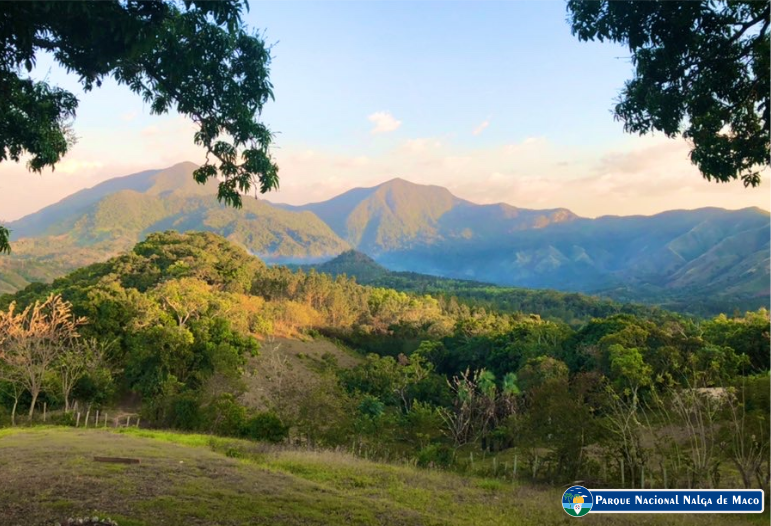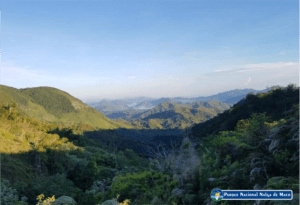
The Nalga de Maco National Park is a national park, located in the Cordillera Central in the western sector of the Dominican Republic near the border with Haiti. It is located south of the municipality of Los Almácigos, province of Santiago Rodríguez.
The entrances to the park are located in the coffee-growing community of La Peonía, which is located a few kilometers south of the municipality of Los Almácigos. The journey from La Peonia to the entrance to the Nalga de Maco National Park is through a dense very humid subtropical forest where you can admire the beauty and lushness of the place.
The relief is very rugged, with geographical areas and depressions that are difficult to access. The altitude varies from 650 meters above sea level in the lowest part to 2000 meters above sea level. The top of Mount Nalga De Maco reaches 1999 meters above sea level and is generally surrounded by clouds loaded with humidity and mist that discharge copious rains. An extensive cloud forest is made up of crooked trunks, profuse branching, and a large number of epiphytes (mosses and orchids) that can completely cover tree branches and the spongy ground surface.
In El Gramal, an extensive savannah that protects the hill in its southeast part, the plants grow forming bushes and cushions. In these parts there are some caves of singular beauty. The climate is high altitude humid tropical with abundant rains during almost the whole year and temperatures that fluctuate between 11 and 16ºC. The higher the elevation, the lower the temperature. The temperature is usually quite cold at night at the top and strong winds can blow for several days.

In the Nalga de Maco National Park, it is estimated that there are some 5,586 seed plant taxa in the area, of which just over 45% are endemic. The elfin forest (cloud forest) occupies the southwestern canopy of the summit of Mount Nalga de Maco. It is the only dwarf forest on the island, and the reduced height of its trees is the product of the winds that blow in the area.
The forest sits on acidic soil and with almost daily rainfall, downpours tend to be short but intense. Wet hollows and leaf litter abound in this part of the hill. It is usually always cloud covered and receives 200 to 250 inches of rain. In addition, the temperature is usually around 10ºC.
Due to its difficult access, this beautiful corner is completely virgin. Its environmental factors and geographical position have allowed the vegetation to be stunted and low. In this beautiful, evergreen forest, the soils are always saturated with water. The most beautiful are the clouds and the mist when they fly between the treetops. This blocks the entry of light reducing the growth of its flora.
Among the mammals that inhabit the park it is worth mentioning the Hutia de la Española and the Almiqui de la Española. A preliminary survey of insects carried out in the park indicated the presence of at least 133 species belonging to 9 orders.
The park has a wide variety of butterflies, of which nearly 200 species of Lepidoptera, Hesperioidea and Papilionoidea have been identified, including Anetia jaegeri, Heraclides aristor, Historis odius odius, Dismorphia spio and Hypanartia paullus.4
AviBase in its “List of Birds of the World” lists 47 species of birds in Nalga de Maco. Among the endemic species are: Hummingbird Hummingbird, Hispaniolan Emerald, Hispaniolan Trogon, Slender-billed Barrancolí, and the Black-crowned Four-eyed Hummingbird.
To find out about other interesting places in the Dominican Republic, follow us at visitadominicana.com
How to get to the Nalga de Maco National Park: CLICK HERE!
